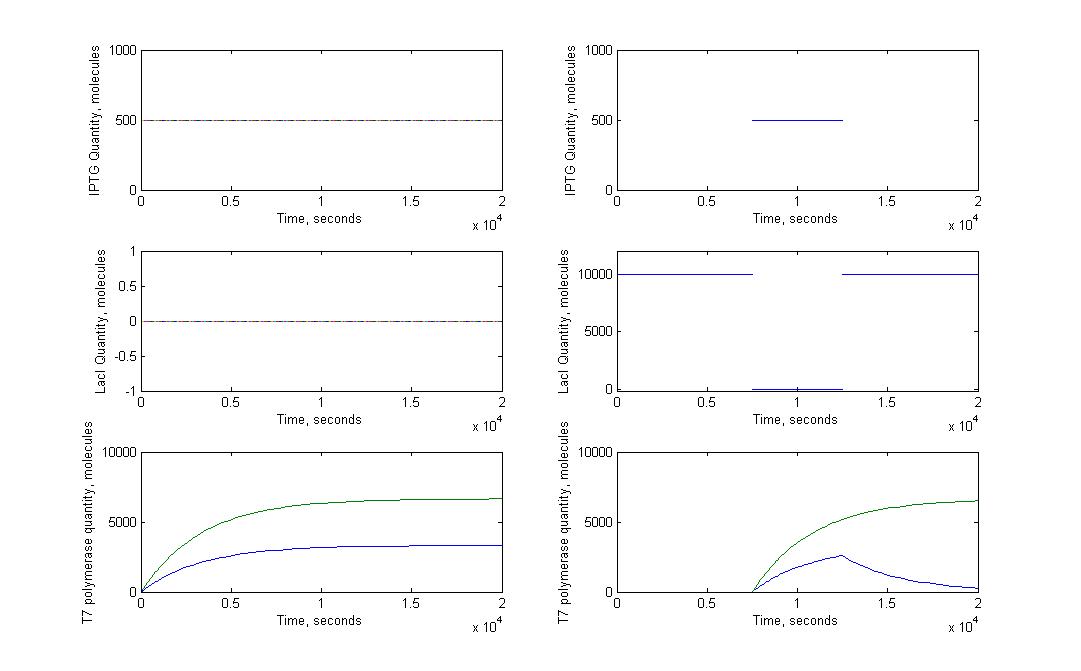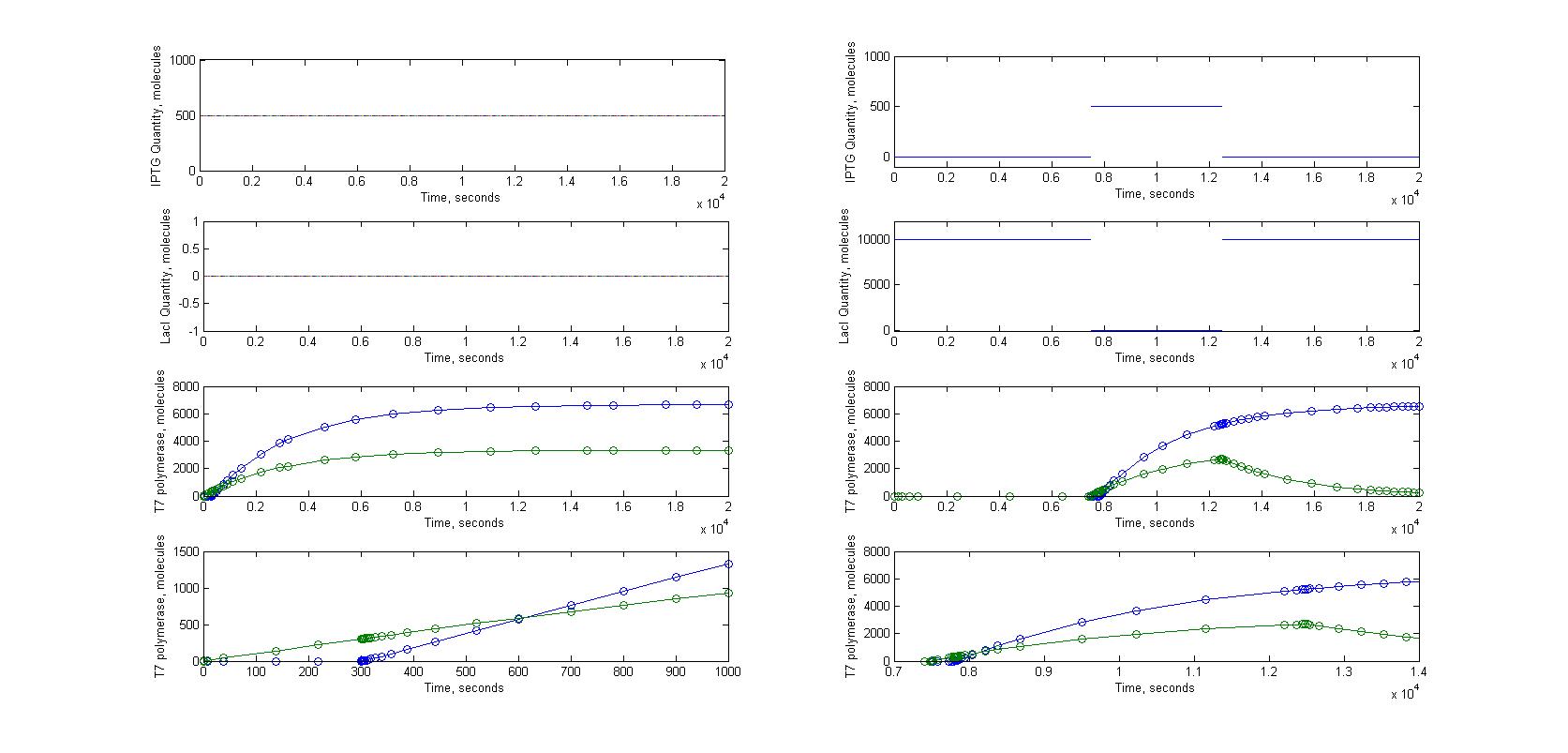Team:Paris Bettencourt/Modeling
From 2011.igem.org
(→tRNA amber system) |
|||
| Line 31: | Line 31: | ||
== Bi-directional communication == | == Bi-directional communication == | ||
| + | |||
| + | == Brownian motion and diffusion == | ||
| + | A significant part of our designs relied on diffusion of very few molecules to activate the amplification and reporter systems. For instance, we know that in the T7 design, we need less than 10 T7 RNA polymerase to trigger the amplification. | ||
<br><br><br><br><br><br><br><br> | <br><br><br><br><br><br><br><br> | ||
Revision as of 12:54, 26 July 2011

Contents |
Modeling
Direct observation
Characterization
T7 system
tRNA amber system
The amber suppressor tRNA diffusion. The idea of the system is to pass tRNA amber molecules through the nanotubes. At every moment of time in the receiver cell there is a certain amount of transcribed mRNA-T7 among the others mRNA. The behavior of tRNA amber that arrived in a receiver cell is random, so in order to describe its interaction with mRNA-T7 and its further translation we can reason in terms of probability.
We can reason in two steps : first a tRNA amber molecule gets close to a mRNA molecule. Then, it binds it's anti-codon with a codon of the mRNA. This reasoning is similar to the problem of boxes and balls. There are two types of boxes: 'a' of the first type and 'b' of the second (which corresponds to the set of mRNA-T7 and mRNA-non-T7), and there are 't' balls(tRNA amber). All the balls are randomly distributed in the boxes. If there are two or more balls in some box of the first type (two or more tRNA amber per mRNA-T7) then a T7 molecule will be produced with a chance P_0.
This system can be modelled after making some important assumptions :
- All the molecules in the cell are uniformly distributed.
- The number of tRNA amber diffused through the nanotubes is much more smaller than the one of the mRNA. Thus the chance that three or more tRNA amber will "find" one mRNA-T7 is negligible comparing to the one of two tRNA amber (finding a mRNA-T7). In our model we will consider that at one moment of time each mRNA interacts with 0, 1 or 2 tRNA amber.
Master/Slave
Bi-directional communication
Brownian motion and diffusion
A significant part of our designs relied on diffusion of very few molecules to activate the amplification and reporter systems. For instance, we know that in the T7 design, we need less than 10 T7 RNA polymerase to trigger the amplification.
 "
"




